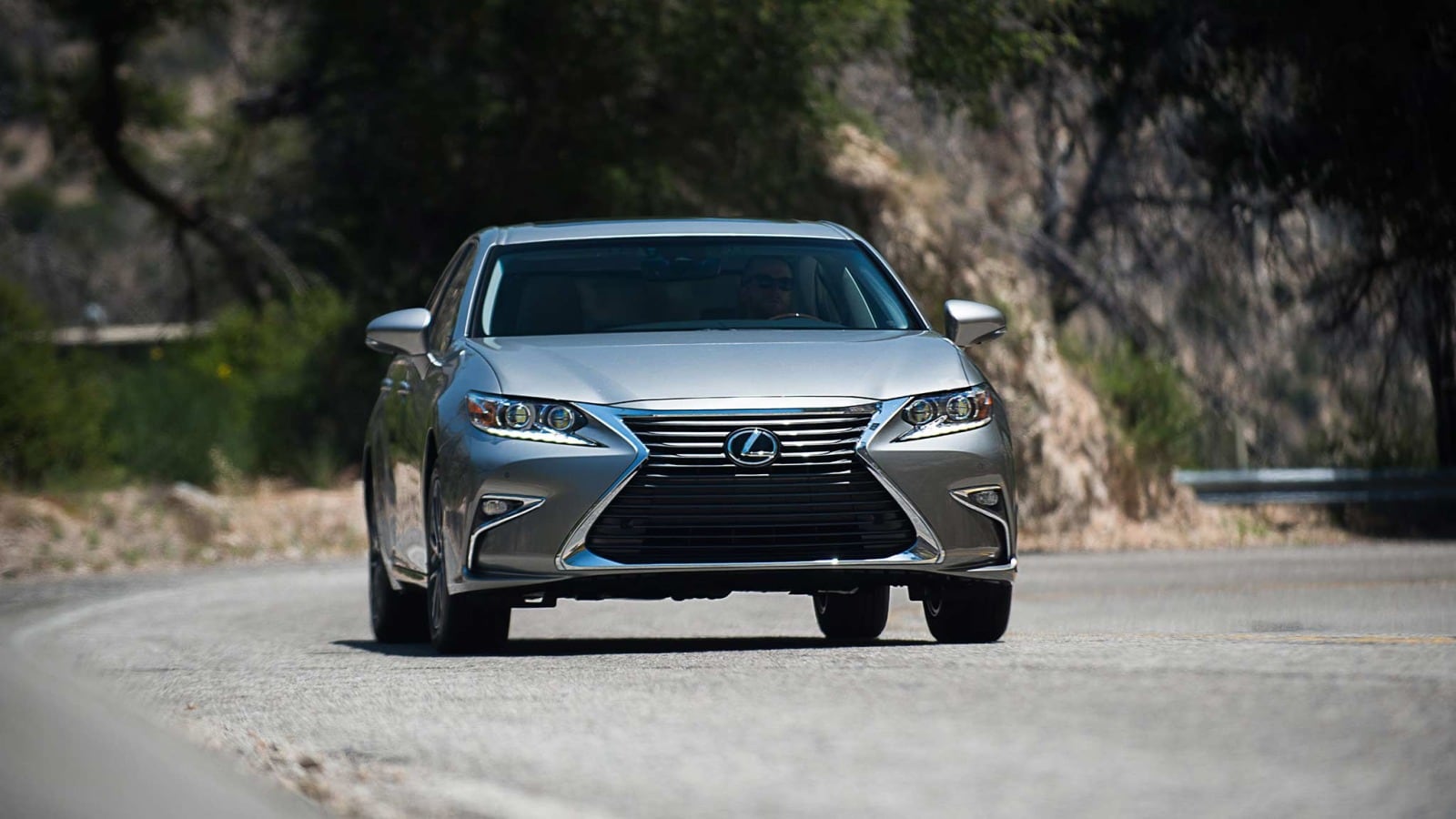When people think of Lexus, they usually think of silky-smooth rides, top-tier craftsmanship, and a reputation for reliability that’s practically unmatched. And for the most part, that reputation is well deserved.
A lot of Lexus owners will tell you their car just keeps going—minimal fuss, barely any repairs, and still feels solid even after six figures on the odometer. But let’s be real—no car brand is perfect, not even Lexus.
While many Lexus models live up to the brand’s rock-solid image, a few have caught owners off guard with unexpected issues. We’re talking about quirky electronics, transmission hiccups, and other frustrating problems that don’t quite fit with what you’d expect from a “bulletproof” luxury car.
Lexus Models With Bulletproof Reliability
So whether you’re looking to buy a used Lexus or just want to know which ones are built like tanks and which ones come with a few warning labels, this breakdown is for you.
We’re diving into five Lexus models that have a well-earned reputation for being nearly indestructible—and five that, well… didn’t quite stick the landing.
1. Lexus LS 430 (2001–2006)
The LS 430 is a flagship luxury sedan built during what many call the golden era of Toyota engineering. Powered by a 4.3-liter V8 and paired with a silky-smooth automatic transmission, this car was overbuilt in all the right ways.
Owners have reported these sedans passing 300,000 miles with minimal issues mainly routine maintenance.
There are no chronic engine or transmission problems, and even the air suspension, often a weak point in luxury cars, is relatively robust here.
New for the 2001 model year, the LS 430 introduces a 4.3-liter V8 engine that delivers the same 290 horsepower as its predecessor but adds 20 additional pound-feet of torque, bringing the total to 320.
Thanks to Lexus’ Variable Valve Timing with intelligence (VVT-i), the engine optimizes valve timing throughout the rev range, eliminating the usual trade-off between high-rpm power and low-end torque.
Paired with a computer-controlled five-speed automatic transmission that sends power to the rear wheels, Lexus estimates a 0–60 mph time of 6.3 seconds.
In terms of design, the LS 430 maintains Lexus’ signature styling cues but now carries a more European flair, drawing comparisons from our staff to the Mercedes-Benz S-Class.
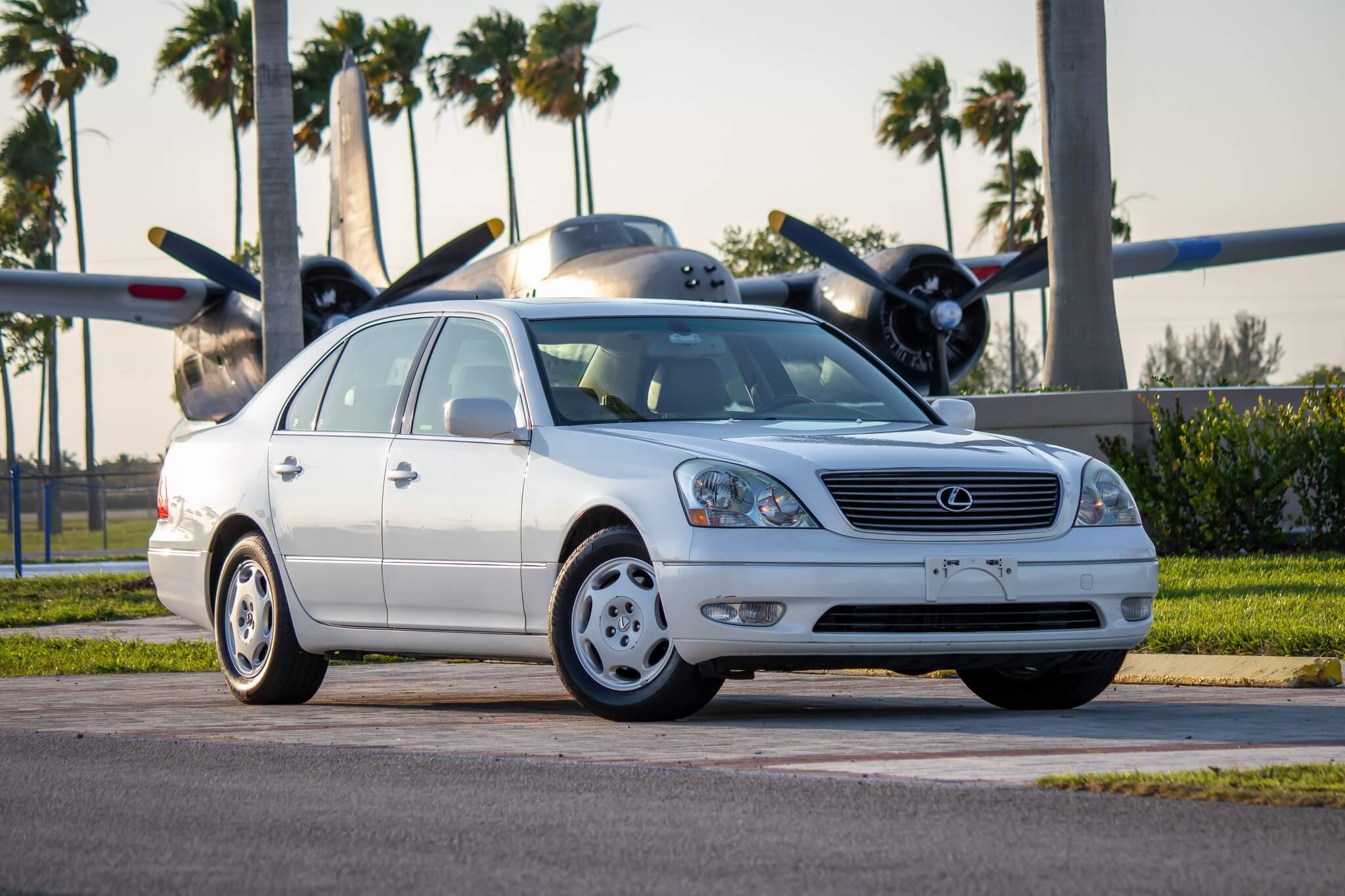
Its aerodynamic shape, refined in the same wind tunnel used for Japan’s bullet trains, achieves an impressive 0.25 coefficient of drag (CD) when equipped with the optional Air Suspension, the lowest of any passenger sedan on the market at the time.
The wheelbase has been stretched by 3 inches without increasing the overall length of the car, which results in a roomier cabin and a trunk that surpasses that of the S-Class in size.
Inside, the LS 430 showcases upgraded materials for 2001, with finer wood and leather trim throughout the cabin. The climate control system is enhanced with sun and temperature sensors that automatically adjust airflow—if one side of the vehicle is exposed to direct sunlight, it receives extra cooling.
The driver’s seat features dual lumbar adjustments and an extendable thigh cushion for improved support. A relocated CD changer frees up space for a larger glove box and additional storage compartments.
Other new amenities include climate-controlled front seats, parking clearance sonar, power-adjustable rear seatbacks with memory, a rear sunshade with manual door shades, and a rear air conditioning unit with a built-in air purifier.
Optional tech upgrades for 2001 include a DVD-based navigation system and a premium Mark Levinson audio setup, making its debut in an automobile, borrowed from the ultra-high-end world of home audio systems that can cost over $100,000.
2. Lexus GX 460 (2010–Present)
The GX 460 blends body-on-frame SUV toughness with Lexus-grade interior appointments.
With a proven 4.6-liter V8 and a reputation for off-road durability, this SUV is a favorite among rural and suburban families who demand rugged dependability.
Its old-school design may feel dated to some, but that same simplicity translates to fewer things breaking. Many owners report getting well over 250,000 miles with nothing more than oil changes, brake pads, and fluid flushes.
The 2012 Lexus GX 460 runs on a 4.6-liter V8 engine that delivers 301 horsepower and 329 pound-feet of torque. A six-speed automatic transmission, your only option, sends power to all four wheels through a dual-range transfer case. When properly outfitted, the GX 460 can tow up to 6,500 pounds.
It’s not easy for most SUVs to strike a balance between rugged capability and refined road manners, but the 2012 GX 460 manages to pull it off impressively.
Whether you’re cruising down the highway on a long-distance drive or carefully navigating rocky, uneven trails, this SUV remains composed and capable. Much of its all-terrain confidence stems from its shared DNA with Toyota’s off-road veterans like the 4Runner, FJ Cruiser, and Land Cruiser.
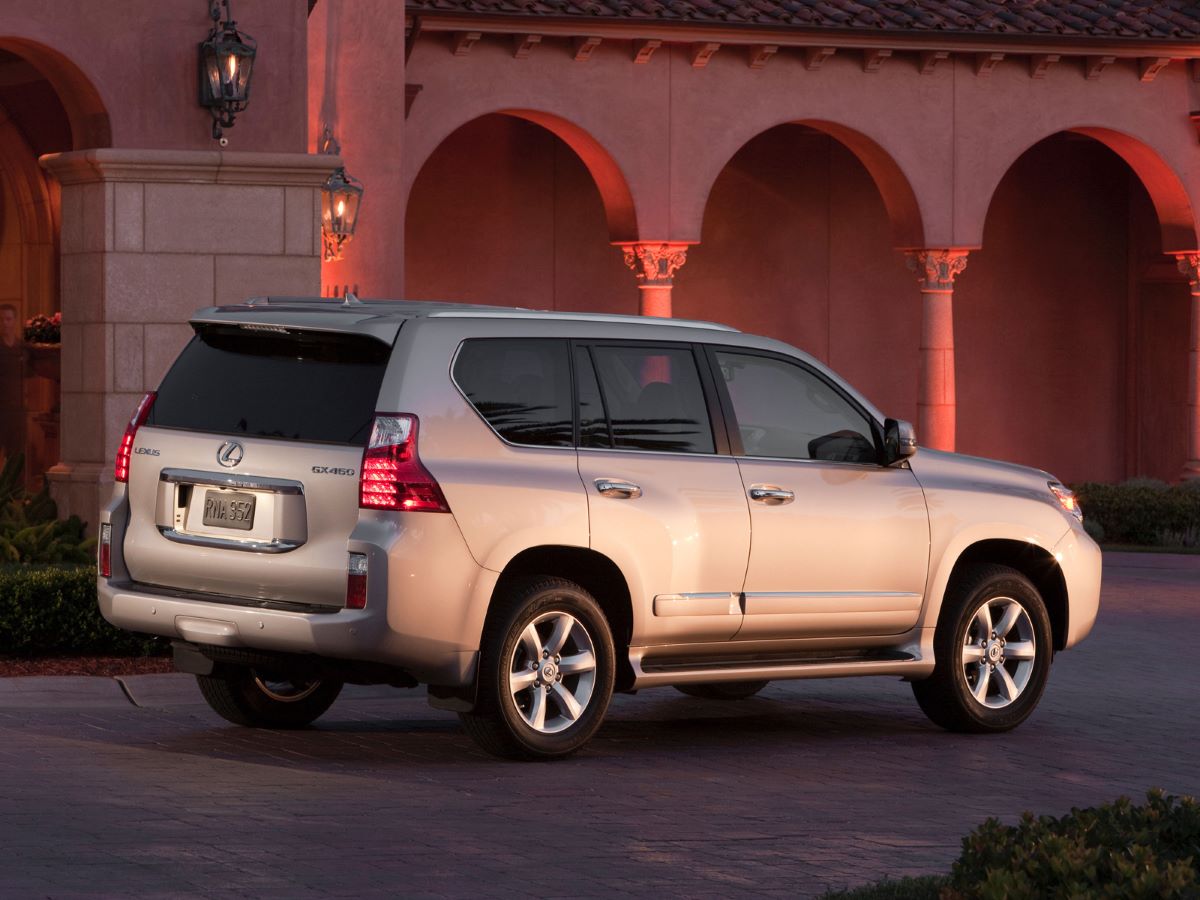
Among these is an adaptive suspension system that offers three selectable modes to tailor ride comfort and control. The GX also comes with adaptive stabilizer bars, which help reduce body roll during cornering but can be disengaged for off-road excursions to maximize wheel articulation.
For more extreme terrain, Lexus includes Crawl Control, a system that automatically manages throttle and braking to maintain a steady speed during hill climbs or descents. This lets the driver focus entirely on steering while the system handles the tricky footing.
Of course, all this heavy-duty hardware does add up in weight—the GX 460 tips the scales at over 5,000 pounds. Still, the V8 handles the load with ease, offering a smooth, strong performance whether you’re accelerating on the freeway or hauling a trailer.
With its blend of luxury, muscle, and off-road readiness, the 2012 Lexus GX 460 proves that you don’t have to sacrifice refinement to get real-world utility.
3. Lexus RX 350 (2007–2015)
As Lexus’ top-selling crossover, the RX 350 from this generation was exceptionally well-built. The 3.5-liter V6 (2GR-FE) is one of Toyota’s most reliable engines, and the overall vehicle layout is simple and easy to maintain.
Transmission issues are rare, and there are no major design flaws that plague these models. Even with over a decade of use, these RX models hold their value and have low repair frequency.
When the Lexus RX series first hit the market, its arrival couldn’t have been better timed. It catered perfectly to a growing group of affluent buyers who wanted the elevated driving position and versatility of an SUV but with the comfort, refinement, and ease of a luxury sedan.
As the original luxury crossover SUV, the RX 300 quickly earned its place as the brand’s top-selling model. It struck a chord with shoppers thanks to its relaxed driving dynamics, whisper-quiet engine, high-quality interior, and Lexus’ trademark build precision.
Now known as the RX 350, this midsize crossover is nearing the end of its second generation but still holds its own in a crowded field. While some competitors outperform the 2008 Lexus RX 350 in terms of sharp handling, this SUV remains a top choice for those prioritizing comfort, quietness, and overall refinement.
Like many vehicles in the luxury crossover category, the RX 350 is based on a passenger car platform, in this case, the chassis from the 2002 to 2006 Toyota Camry. This foundation gives a strong clue about the RX’s character: it’s built more for comfort and long-haul cruising than for tackling twisty roads.
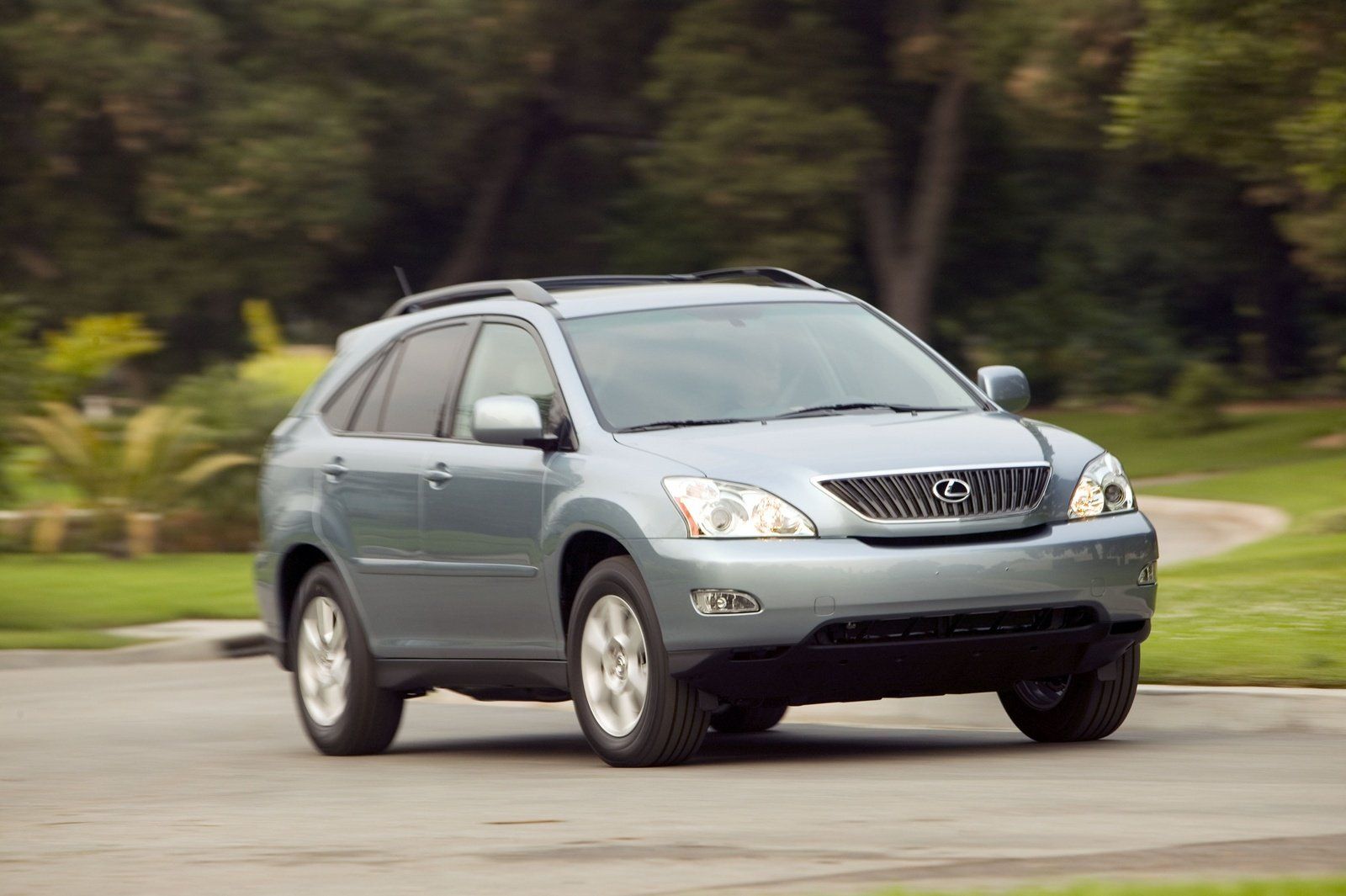
Still, this generation of the RX has a slightly sportier edge compared to the original, helped by the available adaptive air suspension and 18-inch wheels. What really enhances its road performance, though, is the robust 3.5-liter V6 engine Lexus introduced for this model last year.
Beyond its smooth ride and solid performance, the RX continues to stand out for its well-integrated tech features. Even with the recent wave of redesigns sweeping through the luxury SUV segment, the RX keeps pace. It was the first crossover SUV to offer adaptive headlights, setting a precedent for others.
The optional Mark Levinson audio system delivers exceptional sound quality that can go head-to-head with any rival though it comes at a steep $6,200 premium.
A navigation system paired with a rearview camera is also available, and unlike in some competing models, the Lexus system is designed with user-friendliness in mind. It’s intuitive, clear, and doesn’t require a tech degree to operate.
4. Lexus IS 300 (2001–2005)
A cult favorite among enthusiasts, the original IS 300 came with the same 2JZ inline-six engine found in the legendary Toyota Supra (albeit in naturally aspirated form).
The drivetrain is nearly indestructible, and the compact sedan design has aged well in terms of both driving dynamics and maintenance costs. These cars are known to surpass 200,000 miles with minimal complaints, especially if they haven’t been modified.
Lexus, long known for crafting polished yet somewhat personality-free luxury cars, has been working to shed its buttoned-up image.
Back in 1998, the premium Toyota brand made waves with the launch of the GS 400—a bold move aimed at blending the sporty, V8-driven appeal of the BMW 5 Series with a head-turning design and the dependability of Japanese engineering.
While the GS 400 struck a chord with many drivers, it fell a bit short when it came to matching the top-tier performance and initial build quality of its German rivals. The absence of a manual transmission was particularly glaring, especially in a car meant to challenge the benchmark BMW 540i.
But it looks like Lexus took those lessons to heart. Enter the IS 300, a new contender aimed squarely at the BMW 3 Series. Under the hood is a silky 3.0-liter inline-six engine, shared with the GS 300, that delivers 215 horsepower and 218 lb-ft of torque at 3,800 rpm.
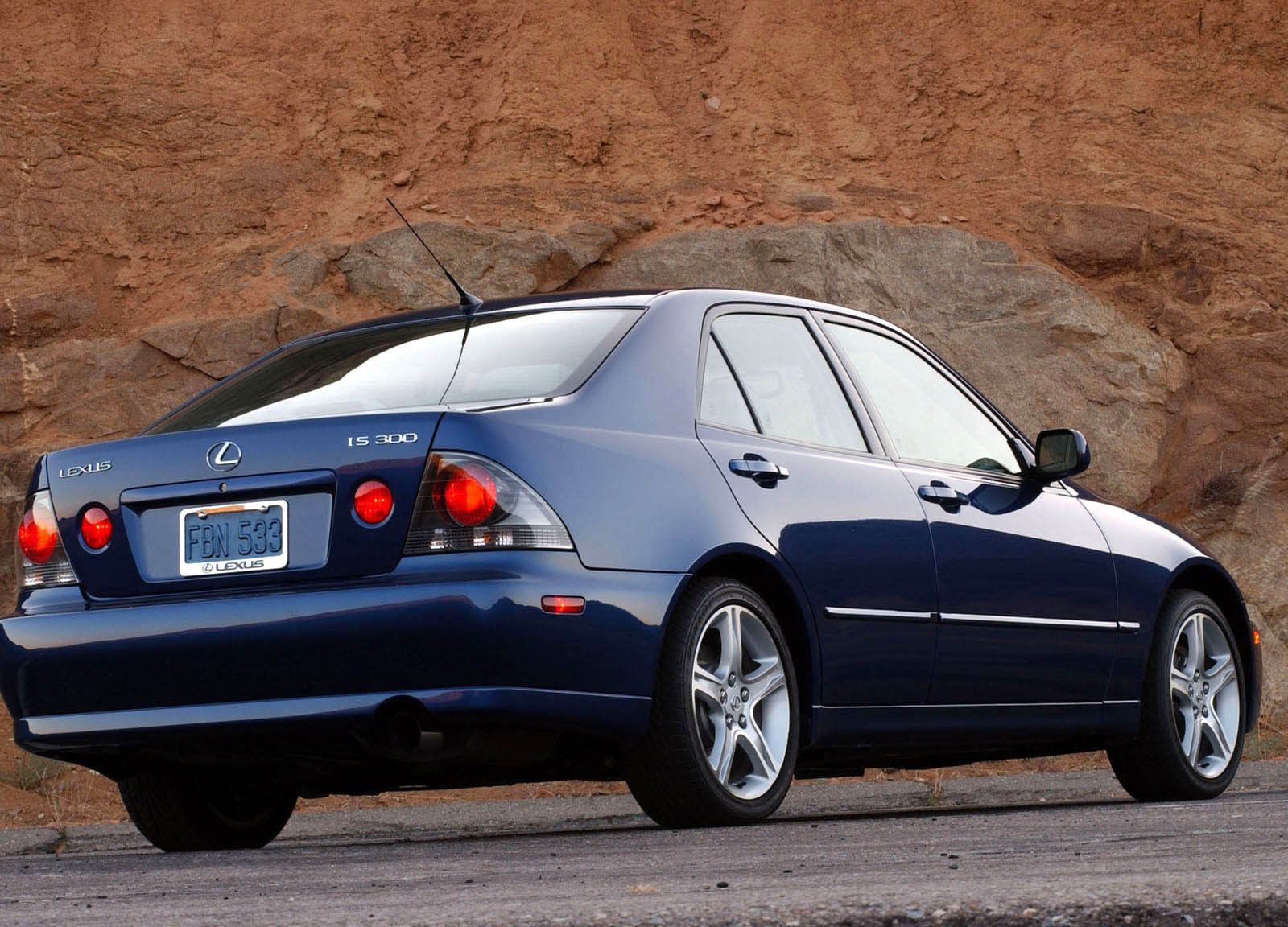
Power goes to the rear wheels, just as enthusiasts would hope. For now, U.S. buyers have to make do with a five-speed automatic transmission that includes E-Shift controls on the steering wheel—similar to the setup in Formula One cars. But purists, take heart: a manual gearbox is coming soon.
So yes, Lexus seems to have been paying attention. The IS 300 brings solid power to the table, and soon, drivers will get the manual experience they’ve been craving.
In terms of performance and design, the IS 300 mostly hits the right notes. Its sharp, well-proportioned body rides on available 17-inch wheels, which can be finished in smoked chrome for a more aggressive look.
While we’re not in love with the circular taillights or the clear rear lens covers, they’re a little too reminiscent of your neighbor’s modified ’94 Accord, the overall design is cohesive, sporty, and attractive.
Step inside, and Lexus really flexes its creative muscle. The centerpiece is a chronograph-style gauge cluster that sets a bold tone for the cabin. Drilled aluminum pedals and trendy metallic accents reinforce the car’s performance-oriented vibe, giving the interior a youthful, high-tech edge.
Underneath, the IS 300 uses double-wishbone suspension at both the front and rear, components tuned on the legendary Nürburgring racetrack in Germany. These work with standard 16-inch all-season performance tires to keep the car planted in corners.
Four-wheel disc brakes with ABS and full-range traction control come standard, and if you want even more grip, you can opt for a limited-slip differential. High-intensity discharge (HID) headlights are also standard, providing excellent visibility after dark.
On the safety front, Lexus covers its bases well. All five seating positions get three-point seatbelts, and front seat-mounted side airbags are included as standard.
The front belts also feature pre-tensioners and force limiters to optimize protection in a collision. A release handle inside the trunk further enhances safety by preventing accidental entrapment.
5. Lexus ES 350 (2013–2018)
Based on the Toyota Camry platform, the ES 350 offers all the durability of its mainstream cousin with added luxury.
This generation featured Toyota’s bulletproof 3.5-liter V6 and a traditional automatic transmission no CVT or turbocharging to complicate things.
It’s one of the most reliable midsize luxury sedans on the used market today, with Consumer Reports and J.D. Power routinely scoring it among the highest in long-term reliability.
The 2013 Lexus ES 350 comes equipped with a 3.5-liter V6 engine that generates 268 horsepower and 248 pound-feet of torque. Power is sent to the front wheels through a standard six-speed automatic transmission.
That loyalty comes from a trusted formula: a spacious midsize layout, a reputation for bulletproof reliability, intuitive controls, a smooth and comfortable ride, and just enough luxury to make the premium over its Toyota Camry sibling feel worthwhile.
Even the exterior design is more evolutionary than revolutionary, adopting a few sharper elements from the newer GS, but ultimately retaining the familiar ES profile. It’s instantly recognizable. Inside, however, the transformation is more pronounced.
Gone is the bland, anonymous cabin of the past, replaced by a more modern, eye-catching interior layout. The new design introduces a bit more complexity, especially due to Lexus’ polarizing Remote Touch interface, but that’s largely because of the increase in available tech features.
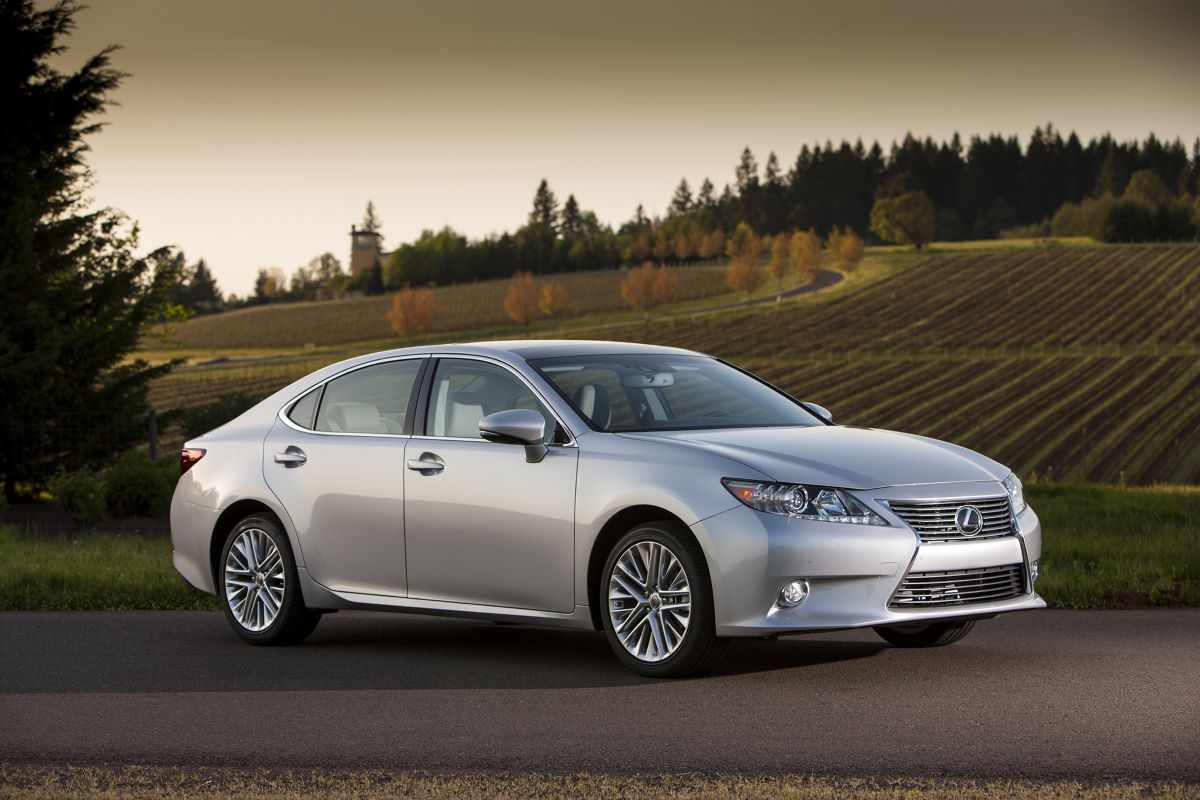
Under the skin, the 2013 ES 350 continues to share its mechanical DNA with the latest Toyota Camry, though it’s now closer in size to the Avalon. While the trio may share engines and other components, the ES stands on its own in terms of refinement and execution.
It also benefits from a stiffer chassis and revised suspension and steering systems, giving it a more planted, solid feel on the road. That added structure translates into sharper responses and better feedback from the driver’s seat.
The ES has always been known and sometimes criticized, for the way it insulates occupants from the road. That serene driving experience hasn’t gone away, but now the driver feels a bit more connected, especially with the Sport mode engaged.
It’s a subtle shift, but a meaningful one, and it shows that Lexus has taken steps to inject a little more engagement without compromising what longtime ES buyers have always loved.
Also Read: 5 SUVs With the Best Headlight Throw and 5 With Dark Spots
Lexus Models With Unexpected Issues
Even the best brands have their off days and Lexus is no exception. While most of their lineup is built to last, a few models have raised eyebrows with reliability hiccups you wouldn’t expect from a luxury nameplate.
Whether it’s quirky tech, drivetrain gremlins, or just not aging well, these Lexus models didn’t quite hit the bulletproof mark.
1. Lexus LS 460 (2007–2012)
Following the ultra-reliable LS 430, the LS 460 introduced more tech but with it came more complexity and problems. Early models had issues with the 8-speed transmission, particularly jerky shifts and hard downshifting.
The air suspension system became more failure-prone, and repair costs were astronomical when it failed. Electrical gremlins also began creeping in, especially with the infotainment and climate control systems.
It’s been 20 years since Lexus took a swing at the luxury market and knocked it out of the park with the LS 400. Now a seasoned veteran, with countless accolades to its name, Lexus is still keeping its rivals on edge—and the 2009 LS 460 is proof of that.
After a major redesign two years earlier, the 2009 Lexus LS 460 continues its evolution with added refinements. One of the most significant updates is the introduction of all-wheel drive, now available on both the standard LS 460 and the extended-wheelbase LS 460 L. This option enhances traction and stability, especially in less-than-ideal road conditions.
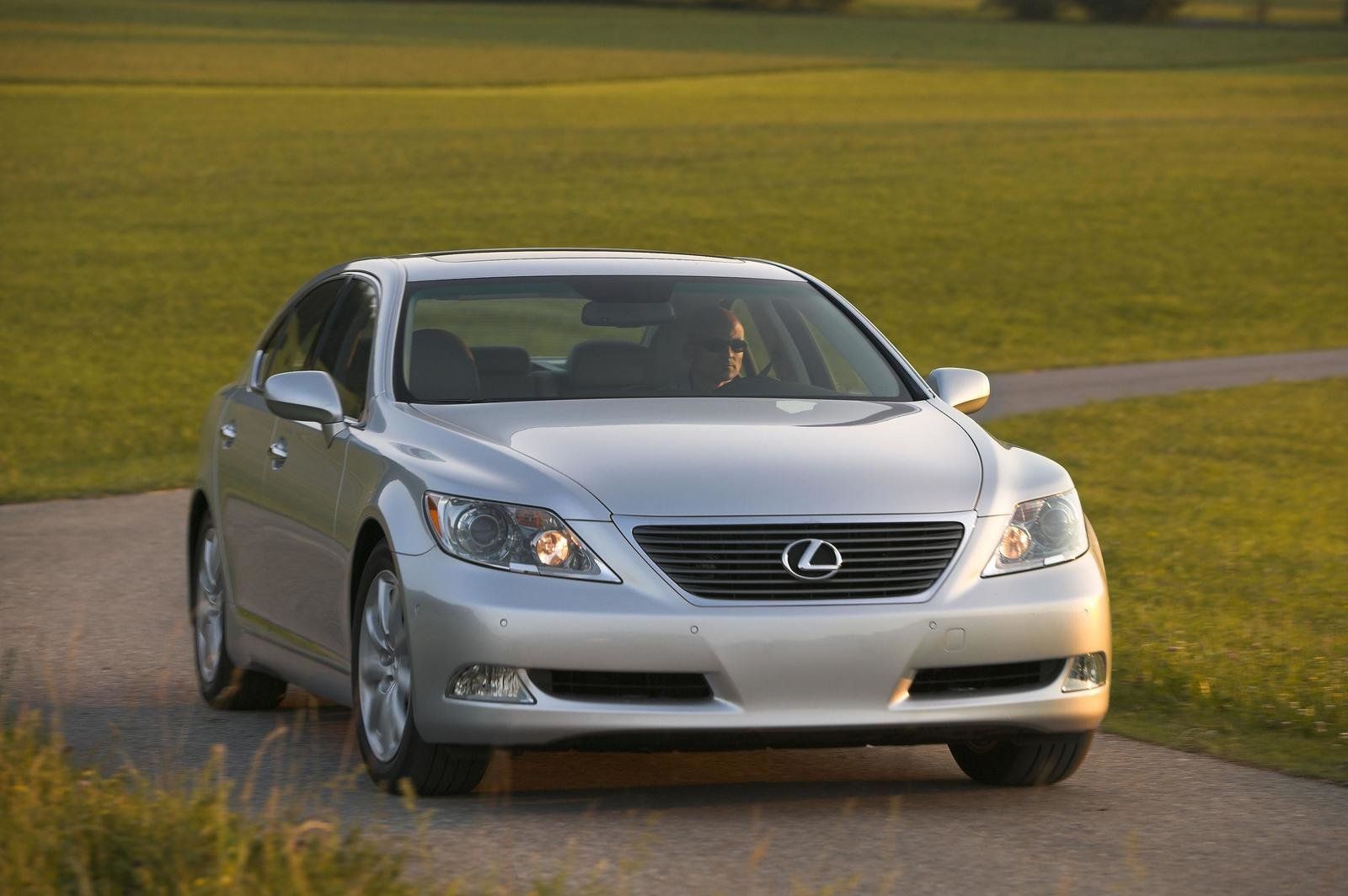
What hasn’t changed are the LS’s signature strengths: a ride so quiet and smooth it feels otherworldly, a powertrain that delivers both grace and muscle, and a track record for bulletproof reliability. It also remains a strong value in a class packed with six-figure sedans.
In the world of full-size luxury sedans, the LS 460 isn’t just holding its ground, it’s setting the bar in several key areas. While it competes directly with heavy hitters like the BMW 7 Series and Mercedes-Benz S-Class, Lexus brings a unique proposition: similar levels of comfort, quality, and refinement for tens of thousands less.
Propelling the 2009 Lexus LS 460 is a 4.6-liter V8 that produces 380 horsepower and 367 pound-feet of torque. Power delivery is silky-smooth and nearly silent, running through an eight-speed automatic transmission with manual shift control.
In our testing of a regular LS 460, we managed to reach 60 mph in a very respectable 5.8 seconds, which is comparable to competing luxury sedans. EPA fuel ratings come in at 16 mpg city/24 mpg highway and 19 mpg in combined driving. All-wheel-drive mileage is essentially identical.
2. Lexus RX 400h (2006–2008)
As Lexus’ first hybrid SUV, the RX 400h was ahead of its time but not without growing pains. Battery issues, inverter failures, and high-voltage system malfunctions became relatively common once these vehicles hit 150,000 miles.
Repairs are extremely expensive if components of the hybrid system fail. While fuel economy was a bonus, the cost of long-term ownership didn’t always justify the savings at the pump.
With its full-hybrid technology, the RX 400h delivers flexibility that’s still impressive today. Its gasoline-electric powertrain seamlessly switches between gas-engine-only, electric-only, or combined modes depending on driving conditions.
At the heart of the system is a V6 engine paired with an electric motor-generator, powering the front wheels. The energy generated is stored in a nickel-metal hydride battery pack tucked neatly beneath the rear seat, staying completely out of the way.
All-wheel-drive models go a step further by adding another electric motor to drive the rear wheels. Together, these elements work in sync to produce up to 268 horsepower, helping the RX 400h accelerate from 0 to 60 mph in under 8 seconds.
When cruising or under light throttle, the system relies solely on battery power, conserving fuel. This hybrid setup delivers acceleration that rivals some V8-powered SUVs, while still topping the midsize luxury SUV segment for fuel economy.
Of course, all of this advanced engineering and fuel efficiency doesn’t come cheap. A typically equipped RX 400h runs close to $50,000, making it around $4,000 more expensive than a similarly outfitted RX 350.
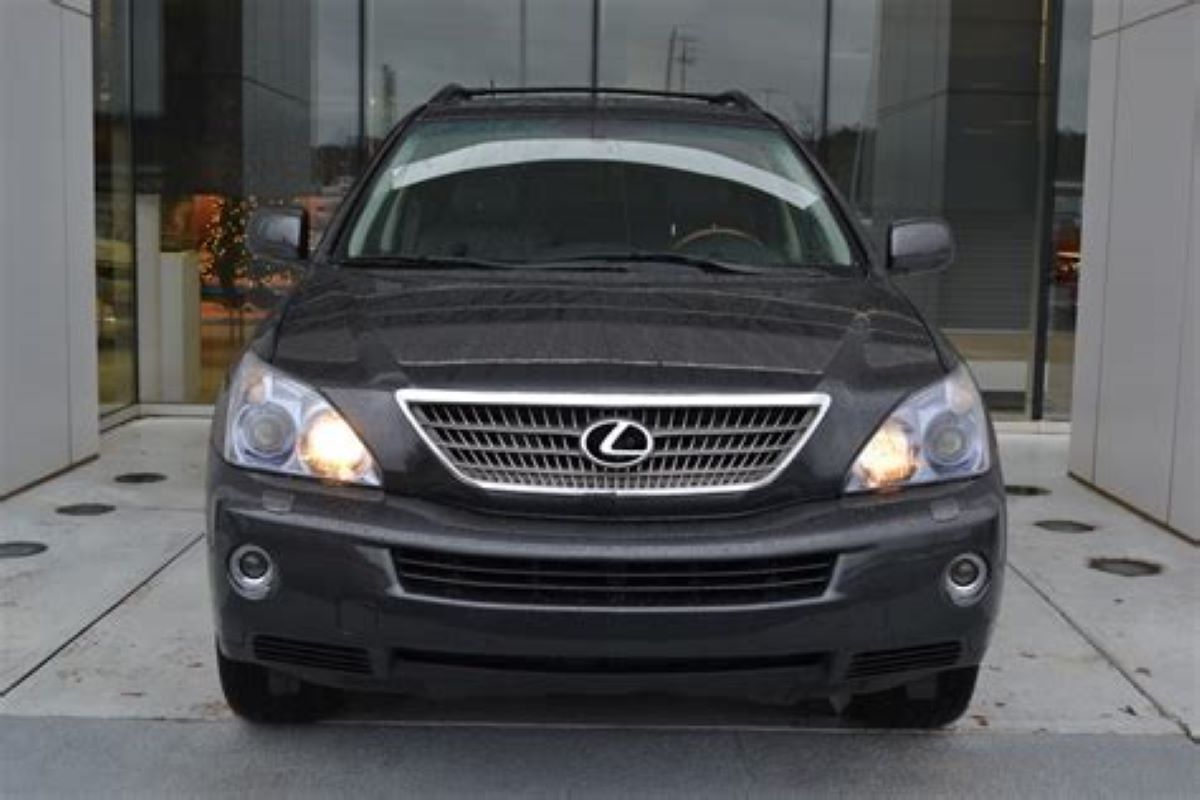
Even with gas prices above $3 per gallon, it could take quite a few years of driving to offset the premium. And from a purely environmental perspective, a Toyota Prius remains the more logical “save the planet” option.
Still, the RX 400h has its own charm. It’s quick, fuel-conscious, and loaded with upscale features—qualities that most luxury SUV buyers will no doubt appreciate.
The Lexus RX 400h hybrid combines a 3.3-liter gasoline V6 engine with electric motor-generators to power vehicle systems and drive the wheels.
Front-wheel-drive models feature two motor-generators, one serving as a starter and the other delivering propulsion, while all-wheel-drive versions add a third motor specifically for the rear wheels. Altogether, the system produces up to 268 horsepower and runs through a specialized continuously variable transmission (CVT).
According to Lexus, the front-wheel-drive RX 400h can sprint from zero to 60 mph in 7.5 seconds, while the all-wheel-drive version does it even quicker, in 7.3 seconds. When properly equipped, the RX 400h offers a towing capacity of 3,500 pounds, matching that of the RX 350.
3. Lexus GS 350 (2006–2011)
The GS 350 of this era suffered from issues with its direct fuel injection system, which often led to carbon buildup on intake valves causing rough idle, hesitation, and reduced fuel economy.
Some owners also reported early transmission wear and brake actuator failures. These cars were praised for performance but disappointed some with unexpected and costly mechanical quirks.
With its full-hybrid technology, the RX 400h delivers flexibility that’s still impressive today. Its gasoline-electric powertrain seamlessly switches between gas-engine-only, electric-only, or combined modes depending on driving conditions.
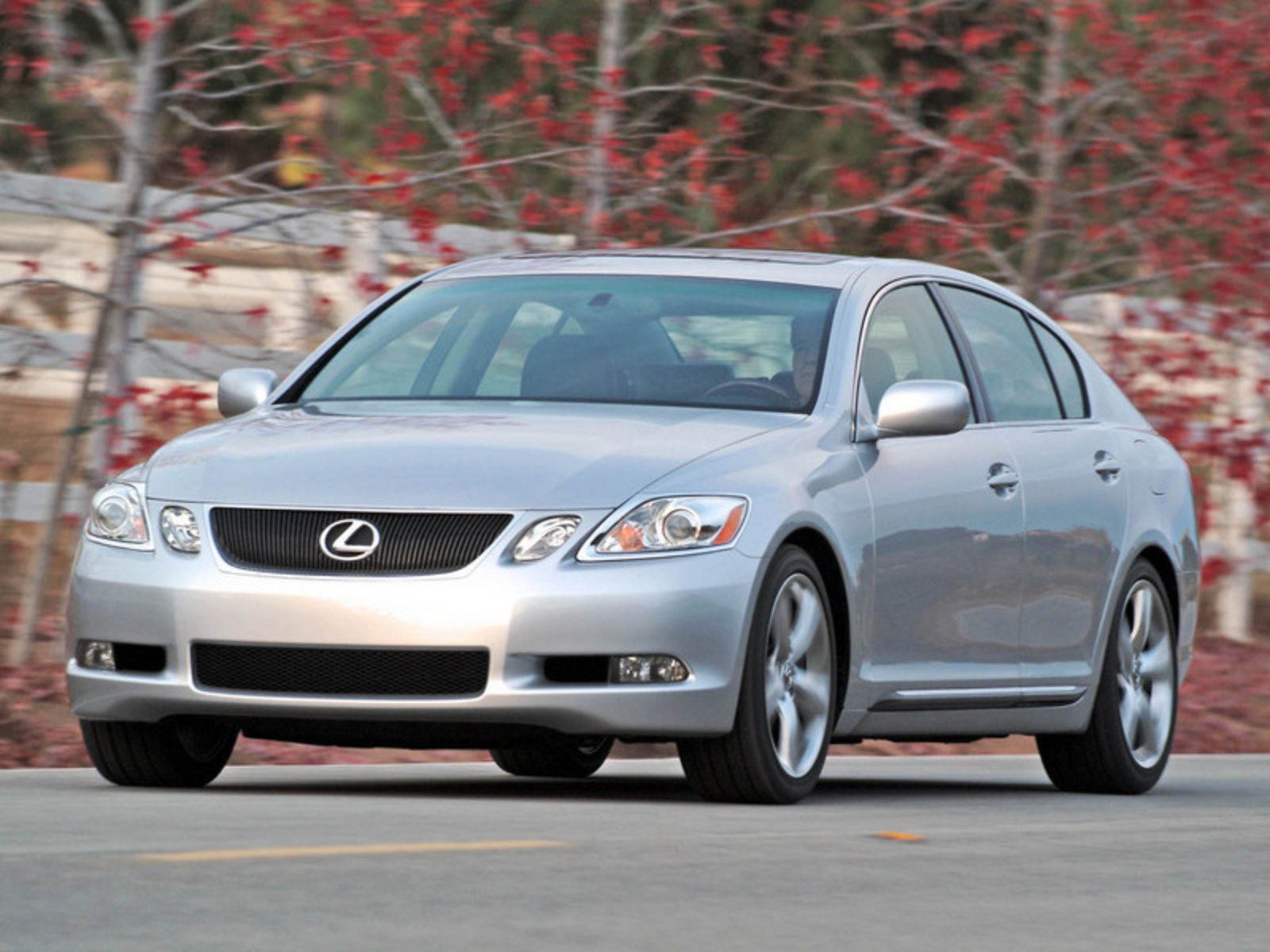
At the heart of the system is a V6 engine paired with an electric motor-generator, powering the front wheels. The energy generated is stored in a nickel-metal hydride battery pack tucked neatly beneath the rear seat, staying completely out of the way.
All-wheel-drive models go a step further by adding another electric motor to drive the rear wheels. Together, these elements work in sync to produce up to 268 horsepower, helping the RX 400h accelerate from 0 to 60 mph in under 8 seconds.
When cruising or under light throttle, the system relies solely on battery power, conserving fuel. This hybrid setup delivers acceleration that rivals some V8-powered SUVs, while still topping the midsize luxury SUV segment for fuel economy.
4. Lexus CT 200h (2011–2017)
Essentially a Lexus-badged Prius with a hatchback body and sportier trim, the CT 200h aimed to blend efficiency with luxury.
However, it ended up disappointing some buyers with harsh ride quality, limited power, and nagging electronic issues. The hybrid battery typically lasts a long time, but once it fails, replacement costs are high.
Plus, many owners complain about rattling interiors and infotainment failures after 100,000 miles.
Powering the 2011 Lexus CT 200h is a 1.8-liter four-cylinder gasoline engine paired with two electric motor/generators. Working together, this hybrid system produces a combined output of 134 horsepower.
The power is directed to the front wheels via a specialized continuously variable transmission (CVT), designed to deliver smooth and efficient performance tailored to the CT’s eco-conscious character.
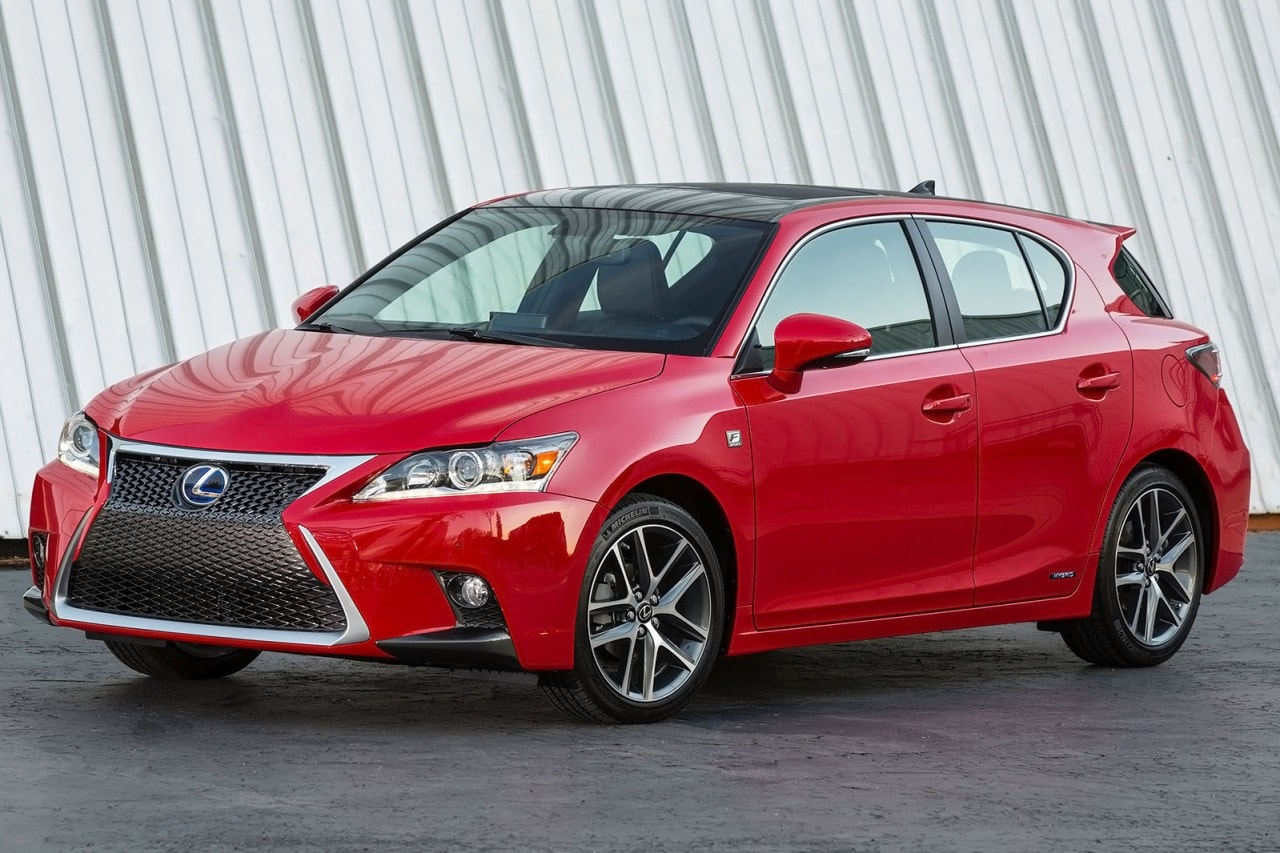
The CT 200h hatchback shares a close connection with the Lexus HS 250h and borrows its hybrid powertrain from the Toyota Prius. But where it sets itself apart is in its focus on handling. The CT 200h is designed with a lower stance and fitted with unique suspension components that give it a sportier edge than either of its siblings.
It also features adjustable drive modes, and once you switch into Sport mode, both throttle and steering responses sharpen noticeably, making the car feel livelier and more engaging behind the wheel than most hybrids out there.
That makes it the most economical pick among its luxury compact rivals. The trade-off, however, comes in the form of acceleration. In our testing, the CT 200h reached 60 mph in 10.4 seconds, just a bit slower than the already leisurely Prius, which isn’t exactly known for quick getaways either.
5. Lexus NX 200t (2015–2017)
The introduction of turbocharged engines in Lexus’ lineup wasn’t without challenges. The 2.0-liter turbo in the early NX 200t had oil consumption issues and turbo lag, frustrating some owners.
Additionally, early infotainment systems in this model were prone to freezing or crashing. The cabin remains well-built, but under the hood, this compact SUV lacks the long-term confidence typical of Lexus.
Under the hood, the 2015 Lexus NX 200t houses a 2.0-liter turbocharged four-cylinder engine that delivers 235 horsepower and 258 pound-feet of torque. Power is routed through a six-speed automatic transmission, with front-wheel drive coming standard and all-wheel drive offered as an option.
In Edmunds’ performance testing, the front-wheel-drive NX 200t accelerated from zero to 60 mph in 7 seconds—a time that sits right around the middle of the pack for this segment. Lexus notes that the all-wheel-drive version should be just a bit quicker.
When it comes to fuel efficiency, the EPA rates the all-wheel-drive 2015 NX 200t at 24 mpg combined (22 city/28 highway), while the front-wheel-drive version edges slightly higher to 25 mpg combined. During Edmunds’ mixed-driving test route, a front-drive NX 200t returned an even better 25.7 mpg.
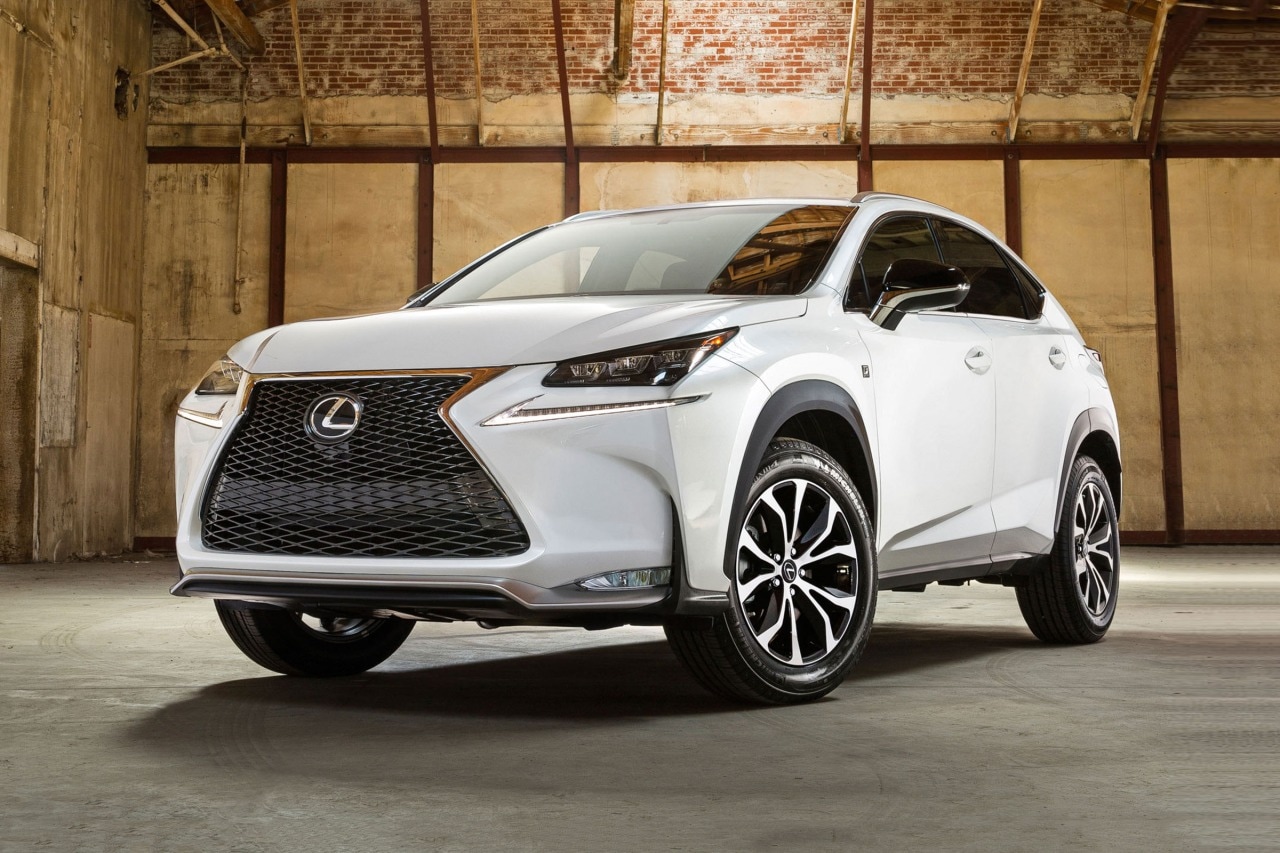
The 2015 Lexus NX 200t comes well-equipped in the safety department. Standard features include antilock brakes, stability and traction control, front side airbags, full-length curtain airbags, a driver’s knee airbag, and a front passenger cushion airbag designed to prevent “submarining” under the seatbelt.
Also standard are a rearview camera and Lexus Enform Safety Connect, which provides automatic crash notification, emergency assistance, and stolen vehicle tracking.
For added peace of mind, several advanced safety technologies are available as options. These include a blind-spot monitoring system with rear cross-traffic alert, a lane-departure warning system, and a forward collision warning system bundled with adaptive cruise control.
This setup can automatically apply the brakes if the system detects an impending collision and the driver doesn’t respond in time. Lexus remains one of the most trusted automotive brands in the U.S., thanks in large part to Toyota’s legendary engineering.
However, even premium brands aren’t immune to occasional missteps especially when introducing new tech or features. If you’re looking for a worry-free Lexus experience, stick with models that prioritize proven powertrains and traditional designs.
And if you’re considering a more tech-heavy or hybrid Lexus, be sure to research long-term reliability trends and potential repair costs before making the investment.

